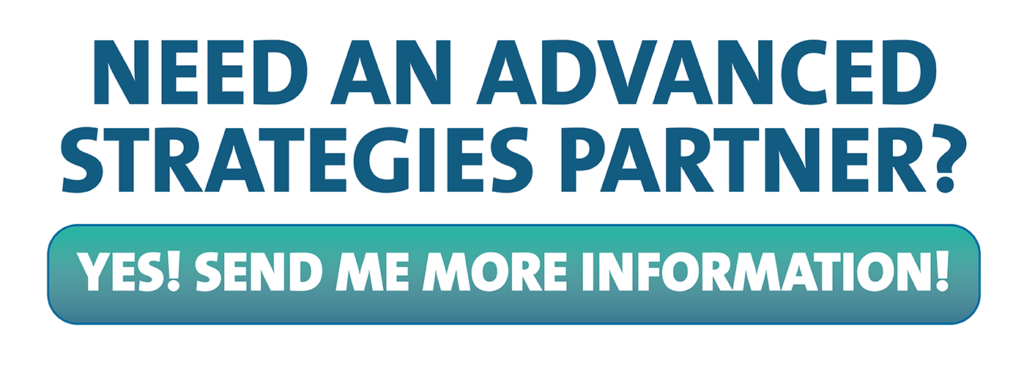It’s of little surprise to business owners that top employees are invaluable to their business’s bottom line and ongoing success. Unfortunately, these key people are highly sought after by their competitors.
As a financial professional, you can support these business owners by illustrating retention strategies designed to retain top performers through valuable employee benefits that reward while handcuffing them to the business.
Nearly 75% of hiring professionals say they have poached an employee, and 73% have had an employee poached by another company.
Skynova
What’s in it for me?
Top employees are looking for opportunities to receive supplemental retirement income beyond traditional. 401(k) plans (qualified) have contribution limits restricting their savings ability. Additionally, these employees desire high levels of life insurance coverage to protect their families before and after retirement.
Employers are willing to provide benefits designed to handcuff their top performers to the business, give key employees life insurance coverage, and reward them for their loyalty and hard work. Informed employers use cost-neutral plans with minimal impact on the company balance sheet and limited government involvement.
You mean there are options?
Supplemental Employee Retirement Plan (SERP), Endorsement Split-Dollar with Planned Policy Transfer (ESDP), and Deferred Compensation Plans (DCP) are some of the best options to consider. Each plan offers flexible, cost-efficient ways to incentivize, compensate and handcuff key employees. Implementing one of these options enables the company to achieve its business goals in a tax-efficient and economically effective manner.
Related: How Retirement Outlooks Differ for Retirees & Pre-Retirees
Supplemental Retirement Plans (Non-Qualified)
As the name implies, this plan can provide significant supplemental retirement income. However, to receive the benefit, the employee must meet the plan’s vesting requirements (i.e., remain with the employer for a specified number of years or a specific date).
How the SERP Arrangement Works Pre-Retirement
The employer enters into a SERP agreement with the key employee. The agreement details the plan’s benefits and vesting requirements. The employer purchases and owns a permanent life insurance policy on the key employee and pays the premium to properly fund the arrangement. The life insurance is used to informally fund the promised retirement income benefit and provide key person coverage for the employer.
How the SERP Arrangement Works in Retirement
If the employee vests according to the agreement, the employer provides the promised retirement benefit by using current business income or accessing the life insurance policy’s cash value.
The employee will have taxable income equal to the amount received from the employer and the employer will receive a corresponding deduction. The policy’s death benefit will ultimately provide an income-tax-free death benefit to the employer, acting as cost recovery for participating in the plan. The death benefit can also be used as a survivor benefit [i] for the employee’s beneficiaries if the employee dies before all promised benefits have been received.
If the employee doesn’t vest, the policy remains with the employer as a business asset. The employer can surrender the policy for cash, take distributions from the policy or maintain the policy until the insured’s death.
Endorsement Split-Dollar with Planned Policy Transfer
An ESDP can provide significant supplemental retirement income to a key employee while protecting their beneficiaries. However, the employee must meet the plan’s vesting requirements to receive the benefit and pay income taxes each year on the value of life insurance protection they receive.
How the ESDP Arrangement Works Pre-Retirement
The employer purchases and owns a permanent life policy on the life of a key employee and pays the premium to properly fund the arrangement. The employer then endorses a portion of the death benefit to the employee who designates a beneficiary (or beneficiaries) to receive those death benefit proceeds. The employer retains the remainder of the death benefit as key person indemnification and as cost recovery.
While the employee doesn’t have to pay the premiums for the life insurance policy, they’re responsible for paying income taxes on the value of the insurance protection (“economic benefit”). So, the out-of-pocket cost is considerably lower than if they’d paid the actual premiums for the policy or the income tax associated with an executive bonus arrangement.
How the ESDP Arrangement Works in Retirement
If the employee vests according to the arrangement, the endorsement is terminated and the life insurance policy is transferred to the employee at that time, giving full ownership rights in the policy. The employee can then take distributions for supplemental income and continue the death benefit coverage.
The employee will have taxable income equal to the policy’s fair market value at the date of transfer, and the employer will receive a corresponding income tax deduction.[ii] The employee can pay the income tax from the policy’s cash values or the employer can provide an additional cash bonus.
However, if the employee doesn’t vest, the endorsement is terminated and the policy remains with the employer as a business asset. The employer can surrender the policy for cash, take distributions from the policy or maintain the policy until insured’s death.
Deferred Compensation Plan (Non-Qualified)
This plan provides an opportunity for additional deferral of income to reduce current income tax exposure while saving for retirement. And just like the other options, the employee must meet the plan’s vesting requirements to receive any promised match and earnings on the deferral from the employer.
How the DCP Arrangement Works Pre-Retirement
The employer enters into a DCP with the key employee. The agreement details the plan’s benefits and vesting requirements. The employer purchases and owns a permanent life insurance policy on the key employee and pays the premium to properly fund the arrangement. The life insurance is used to informally fund the promised retirement income benefit and provide key person coverage and reimbursement for the employer.
If the employee doesn’t vest (i.e. leaves the employer), the match and any earnings are forfeited but the deferred amounts are not. The insurance policy remains with the employer as a business asset. The employer can surrender the policy for cash, take distributions from the policy or maintain the policy until insured’s death.
How the DCP Arrangement Works in Retirement
If the employee vests according to the agreement, the employer provides the promised retirement benefit by using current business income or accessing the life insurance policy’s cash value.
The employee will have taxable income equal to the amount received from the employer and the employer will receive a corresponding deduction.[i] The policy’s death benefit will ultimately provide an income-tax-free death benefit to the employer, which acts as cost recovery for participating in the plan. The death benefit can also be used as a survivor benefit[iii] for the employee’s beneficiaries if the employee dies before all promised benefits have been received.
Continue Reading: The 4 Rs of Managing a Successful Business
Assisting your business-owner clients with complex but rewarding offerings for top employees can result in win-win-win (advisor-owner-employee) solutions for everyone!
At Financial Independence Group, we’ve built an Advanced Strategies team who can partner with financial professionals to illustrate case design options for your most complex financial situations. Click to connect with us and receive a free download of our Premium Finance Toolkit.
The content within this article is for educational purposes only and does not represent legal, tax or investment advice. Customers should consult a legal or tax professional regarding their own situation. This presentation is not an offer to purchase, sell, replace, or exchange any financial product. Insurance products and any related guarantees, features and/or benefits are backed by the claims paying ability of an insurance company. Insurance policy applications are vetted through an underwriting process set forth by the issuing insurance company. Some applications may not be accepted based upon adverse underwriting results.
[i] Assuming compensation is reasonable under IRC §162.
[ii] Assuming compensation is reasonable under IRC §162. If the policy is in a gain position (cash surrender value is greater than premiums paid), then the employer must recognize that gain at time of transfer which will reduce the overall income tax deduction (deduction will be limited to premium paid).
[iii] The survivor benefit is taxable when received by the employee’s designated beneficiaries and is deductible by the employer when paid.


